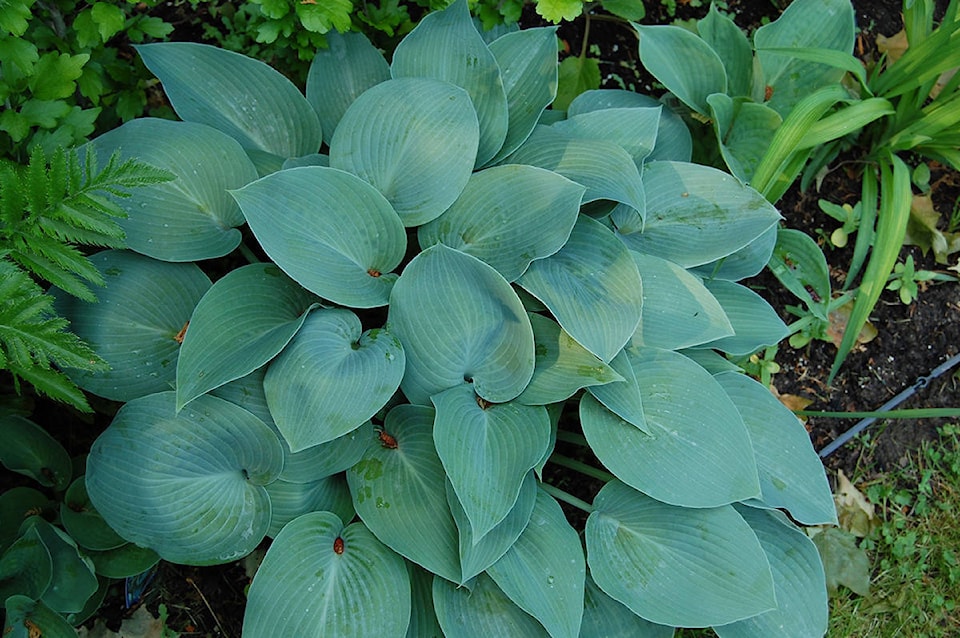Now that we are in the heat of our growing season, many of us head for the shade.
If this is you and you happen to notice that the shady parts of your garden are a little thin on plant population, I am here to help.
People often say to me, “I can’t garden because my whole yard is in the shade.”
My response is, “Aren’t you lucky! What an opportunity to do something interesting with your garden.”
What shade?
There is thin shade, like on the north side of your house or under a birch tree and then there is the dense sort of shade that you find on the forest floor.
Different situations for different plants.
My list of great shade loving plants below is split into two: one for dappled or thin shade and another for growing under your mature Norway maple.
Water?
Just to confuse you, applying the appropriate amount of water in a shady garden can mean pulling back and minimizing the amount on the north side of your house where evaporation is slower than it is in the sun.
Or, it can mean applying more water more frequently in the root zone of mature trees (especially when establishing the young roots of new plants).
Soil.
This is essential to your success as a shade gardener, especially under mature trees where tree roots compete with smaller plants at their feet for water. When I plant in a densely shaded area, I spread 12 to 15 cm of new triple mix or other quality garden soil on the existing ground, being careful not to mound soil up the trunk of existing trees. Instead, slope the soil down to the ‘root flare’ where the root flares out from the main trunk of the tree.
Shade loving flowering plants:
Thin/dappled shade:
Hosta provides loads of colour and texture by way of their leaves but they also have great flowers that attract hummingbirds.
Astilbe [false spirea]: great in part shade but do not let them dehydrate as they are not good after re-hydrating. Beautiful spikes of brilliant colours. Suitable for cutting.
Bugle Flower [ajuga]: a great ground cover in semi-shaded areas. Choose from the popular bronze leafed varieties or the original green. Blue/purple flower in May or June. Can be aggressive and grow into your lawn.
Christmas/Lenten Rose [helleborus] early flowering and won’t quit for many weeks.
My hellebores greet the spring with my 20,000 daffodils. Makes me not want to leave home even to buy milk.
Large, buttercup-shaped flowers of cream, pink or purple that last for several weeks. Evergreen foliage.
Coral Bells [heuchera]: outstanding for their early summer colour, flowers that you can cut and bring indoors and foliage that attracts attention wherever it goes.
Matures to about 20 to 50 cm depending on variety. And there are many varieties!
Ferns: there are more ferns out there than I can list in this column. Suffice to say that when a tree falls down in a dense forest, the ferns sprout up within the second season. This tells us two things about ferns: they do need some dappled sun and they are incredible survivors. Look for non-native Japanese Painted fern, lady, Soft Shield, Robusta Male or native maidenhair, cinnamon, ostrich, Christmas, Fiddle head, or Wood ferns. All have a place in a partly shaded garden.
Rodgersia: dramatic and bold, featuring a pink or creamy flower in early summer. This is like rhubarb for the shade with leaves shaped like a giant chestnut. Grows to 60 or 100 cm.
Dense shade:
Where no sun penetrates.
Japanese spurge [pachysandra]: hardy to zone 5, this is a great looking ground cover that is evergreen. Strong: even my dog couldn’t kill it.
Plant densely, about 12 cm apart for the ‘ground cover’ look. Grows to about 15 cm high with a creamy white flower in late May or June.
Lily of the Valley [convallaria]: indestructible, self propagating and great looking where almost nothing else will grow. Great ground cover with sweetly fragrant spring flowers. Also ‘dog proof’.
Native Woodland Plants: Trilliums, Canadian ginger [asarum], sweet woodruff [gallium], Jack in the Pulpit, and Marsh marigold are all native woodland plants.
They all look great early in the spring and some continue to show foliage throughout the summer (woodruff being #1 in my books).
When looking for great ideas for plant selection, it is always good to look at what Mother Nature is doing, in this case on the forest floor.
Keep in mind that these plants are available as nursery grown plants from reliable plant retailers.
Do not take plants from the wild. Ever. And finally, there are a handful of trees that grow in dappled shade.
Look for native sugar maple, Canadian hemlock and Downy Serviceberry.
Yews [taxus], boxwood and Canadian Holly [mahonia] are not native but quite tolerant of little sun.
Mark Cullen is lawn &garden expert for Home Hardware, member of the Order of Canada, author and broadcaster.
Get his free monthly newsletter at markcullen.com. Look for his new best seller, ‘The New Canadian Garden’ published by Dundurn Press.
Follow him on Twitter @MarkCullen4 and Facebook.
